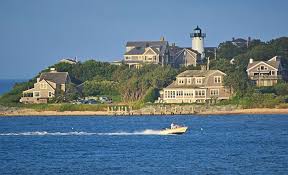We are sailing on Le Lapérouse, one of Ponant’s cruise ships, which is on an eight day cruise up the Vietnamese coast, commencing from Ho Chi Minh City. The weather reflects the fact that it is still the rainy season. This Ponant ship was constructed in two parts by VARD, one of the major global designers and shipbuilders of specialised vessels. Headquartered in Ålesund in Norway and with approximately 8,000 employees, VARD operates seven shipbuilding facilities, three in Norway, two in Romania, one in Brazil and one in Vietnam. VARD also develops power and automation systems, deck handling equipment, vessel accommodation, and provides design and engineering services to the global maritime industry.
The hull was constructed in the Romanian city of Tulcea, which is the major settlement on the edge of the Danube Delta, but the ship was outfitted in Norway, and the Scandinavian influence is shown in the clean lines and the light airy fittings which seem to be beech or pine. The trip between Tulcea, through the Danube Delta (predominantly Romania but including the Ukraine and Moldova) to Norway takes three weeks and it was towed by tugboat the whole way. It must be an interesting journey these days to enter the Black Sea towing a partially finished ship. Unless you have been there, you do not appreciate the Delta’s immense size, and stopping off on one the many settlements in the Delta, as I had done on a previous trip down the lower Danube, I learnt that the villagers spoke Ukrainian not Romanian. There is much cultural intermingling.
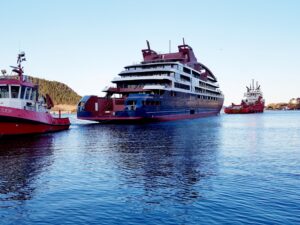
The ship, as its name suggests, is determinedly French, although curiously it is registered in Mata’Utu, the largest settlement in the Wallis and Futuna Islands, a French territory north of Fiji and west of Samoa.
On the bow of the boat, flutters the Breton flag – nine alternating black and white stripes in the upper left canton of which, in serried rows, there are what look like eleven scarecrows – not the stated description impenetrable in my heraldic illiteracy. The captain of the ship is a Breton.
Before we embarked, we all had to be tested for COVID-19 in Vietnam. I might add it cost around $22 for two of us, whereas when we were tested earlier in the year prior to going to New Zealand, it cost in the region of $120 from one of those “cut-price” pharmacies. Thus, all the passengers who boarded the ship were RAT negative, but on the first day one of the crew was reported to have tested COVID positive and from then on, all the crew wore masks. There were no more positives reported.
The food is mostly French, the wine is French, the chefs are French, the waiters are mostly Filipinos or Indonesian and the sommelier comes from Djibouti. The service is superb, but still there are gangplanks to be negotiated, and tours are for those who can walk over uneven streets and for three nights, there was weather, with “pitching and rolling” in a three metre swell. Nature is there to test not cuddle one. Fortunately, the typhoon in the Philippines was tracking away, but we were still left with strong winds from the north.
Nevertheless, the two cabins for disabled passengers have been outfitted well, with quasi-timber floors, not tiles which are notoriously slippery, irrespective of the vigour of the boat movement. The cabin is spacious, and the shower space has been cleverly designed to accommodate a wheelchair, but not so large that the ambulatory disabled cannot grasp a hand rail.
The passengers are mainly French; there is a smattering of Americans, 18 Russians – and about seven Australians, including a retired nurse from Canberra, who classifies herself a seasoned Ponant traveller having been on four cruises including this one, although this one was more courtesy of an enforced COVID confinement on the previous cruise resulting in credited days on a future cruise.
The large cruise ships have emerged from a period where they were seen as villains in the spread of COVID-19 and that there was something squalid about this form of leisure – the love boat, excessive drinking, a casino and theme park on the water with variety shows, games and boorishness admixed into some forced jolliness.
Ponant is none of these. Perhaps the price deters some and these boats have much smaller numbers of passengers and promises of French chic, personalised service, no herd-driven demand to participate in onboard activities, sensible flexibility in the rules and exotic locations. To what was promised: I would say “yes” to the first four.
The problem with the places where this ship berthed is that they were working ports, and to see the historic and natural sites one had to go well away from the dock for whole day excursions. Perhaps some time in the future Vietnam will have more “cruise ship docks” given the country is looking to develop this area of tourism, together with the massive resort developments taking place along the coastline with its palm fringed beaches. Vietnam has been a preferred holiday destination for both Russians and Chinese tourists, and while the Chinese have developed their own casino resorts they are probably empty at present while China remains effectively locked down. Nevertheless, the long bus excursions from cruise boats would still remain.
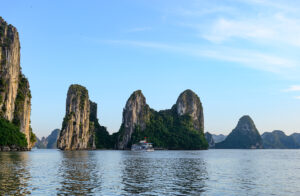
I contemplated several and paid for the Ha Long boat excursion, but in the end I suspected the boat transfers may prove too difficult and didn’t go – reports of unstable portable steps more suited to giants and small, rocking boats confirmed it was the right choice. No doubt the huge limestone rocks which dot the Ha Long Bay justify recognition by UNESCO as one of its spectacular World Heritage sites, but not if venturing to see them is more ordeal than being able to appreciate their uniqueness. Fortunately, the view from the “main channel” when you enter the Bay provides sufficient exposure.
To me the challenge was to take a cruise to compensate for several cancelled because of The Virus in 2020. In the intervening two years my level of disability has increased so choice of cabin and activities requires planning.
Among the 94 cabins there were two for the disabled. As I said above, they are so well appointed that they should serve as models for all ships setting aside space for the disabled, so different from the airlines.
However, let me be frank and it may be my own experience, but Asia does not yet do disability well. That is not to say that people do not try and be unfailingly helpful, but they are untrained and nobody in many cases has thought about access nor the needs for showers, toilets and beds to be disabled-friendly. Rooms provided with rails, nonslip floors, chairs – firm enough so that one can get up unaided – a feature that equally applies to the bed.
This is increasingly going to be a challenge to the tourist industry as the number of not only wheelchair bound, but the ambulatory disabled increase – a very fertile ground for the entrepreneur prepared to challenge this whole area of Aids to Daily Living, even on holiday.
Fraser and the Fishing Boats
Fraser was right to claim successive governments did not withstand similar pressures as he had experienced, but he sees these as pressures of hostile and xenophobic anti-refugee community sentiment: the long-term agenda of immigration officials was of greater weight in Australian politics, expressing itself as an insistence on governments and Immigration Ministers. The “mandarins at the border” did not abandon the templates they had developed, and eventually they found future governments who would progressively implement their agenda. During 2010, former Prime Minister John Howard’s Immigration Minister Philip Ruddock would boast about ‘his’ “interlocking suite of measures”.. Philip Ruddock was referring to policies he brought to the Parliament; yet another view might argue he merely claimed for himself the proposals first tabled at Fraser’s 1979 Cabinet meetings.
(From James Smit, “Malcolm Fraser’s response to ‘commercial’ refugee voyages” p 103)
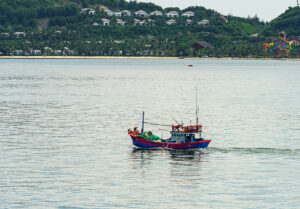
Colourful Vietnamese fishing boats ply their trade along the coast. They are the same vessels that sailed with refugees to Australia. Seeing them, I was reminded of the first time I went to Broome. I had booked into the Mangrove Motel which was located on a sandy knoll and from my window I looked onto a forest of mangroves and beyond out to that distinctive azure sea which is the Indian Ocean. The difference between low and high tides can be much as 10 metres. Perched in the mangroves was a beached Vietnamese fishing boat. It was 1979. Over the years whenever I returned the boat was more decayed until there was only a remnant of the keel left.
Yet despite the conclusion reached in a review of Fraser’s contribution, between 1975 and 1982 when he was Prime Minister, 60,000 Vietnamese came to Australia, but only 2,000 who came were identified as “boat people” or “queue jumpers”, as Minister McPhee called them at the time. Most of the refugees came from South Vietnam, some were opponents of the incoming communist regime or had worked for the foreign forces. Those fleeing in the fishing boats still had to negotiate the Indonesian and Philippines archipelago, where they were attacked by pirates, the women raped, and all those on the boat including children murdered. Those who did reach Australia were allowed to stay and were not inhumanely towed out to sea.
The acceptance of these Vietnamese owed much to Whitlam’s ditching of the “White Australia” policy, which had underpinned much of our community attitudes, particularly to non-Europeans, since settlement in 1788.
The end of the 1970s found Vietnam still in turmoil; the concurrent rise of the Khmer Rouge and their Killing fields in Cambodia just aggravated the strife in Indochina in the aftermath of the “American War”. Arising from the criminality of the use of carpet bombing, napalm on villagers, inhumanity spread like fertilizer over the Indochinese countryside. Retribution was often brutal. Yet in Australia, with a blind eye to what was happening in the World, Government has maintained a policy of obstruction of those trying to reach their perceived safe haven, Australia, unless “they played the game”.
The use of the term “queue-jumpers” exemplified this response akin to “chaps, play the game.” Despite all, Australia has a vibrant Vietnamese population, the older generation having given way to a generation born in Australia.
Just like the election of 1966, the conservative party in Australia has been unerring in pushing the “yellow peril” button when in electoral strife. John Howard was, to me, the epitome of the curate’s egg, hard boiled. The various exercises under his stewardship designed to prevent asylum seekers coming by boat, demonised the people smugglers, and then imprisoned those trying to escape conflict. Their crime? “Not playing the game” was added to the charge sheet.
It was an expensive solution. One source has it that in 2021 the annual cost, per person, to the Australian government of detaining and/or processing refugees and asylum seekers was estimated as follows: almost A$3.4m to hold someone offshore in Nauru or Papua New Guinea; A$362,000 to hold someone in detention in Australia. The deal struck between Cambodia and Australia to take refugees, which was brokered by Morrison, then Immigration Minister, in 2014, ended four years later after the Cambodian government had pocketed A$40m for ten asylum seekers, only one of whom stayed in Cambodia. He was last heard of in 2019 without assistance, a Muslim in a Buddhist country, no access to Cambodian citizenship and forgotten by Australia.
It is easy to tolerate inhumanity when you are shielded from its excesses. The demon is the people smuggler, and so it goes, there is something morally wrong in endeavouring to use whatever means at hand to reach Australia. However, given that Australia was up to doing questionable deals in response to getting rid of asylum seekers at great cost, it would have made more sense to locate an immigration department presence on one of the Indonesian islands and cut the middleman out. Then, perhaps the public disgrace where the Tamil family were treated so appallingly could have been avoided.
At several stages, given that we have an apartment in what was Frydenberg‘s electorate, I contemplated a hunger strike, but given my general health, it would have been futile, but then standing up for something you believe in is essentially an exercise in futility.
I always think of the IRA soldier, Bobby Sands, who died in 1981 aged 27 in the Maze prison, maybe an urban terrorist but a man who believed passionately in a cause for which he was prepared to die. After all, the litany of beatified persons, who died for their belief, forms one of the Christian Church’s traditions. Their images are cast across Christendom and they live on as labels of churches, cathedrals and basilicas. Plus, you have a particular day in the calendar where people may worship your hallowed name.
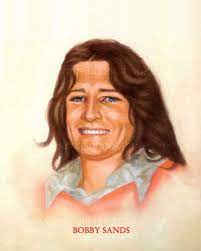 But not Bobby Sands. Misguided … depends on whose perspective – a person who faced his own mortality, but yet has no church in his name. I could not do what he did, with the walls of rationalisation I had constructed to reassure myself.
But not Bobby Sands. Misguided … depends on whose perspective – a person who faced his own mortality, but yet has no church in his name. I could not do what he did, with the walls of rationalisation I had constructed to reassure myself.
Anyway, the Tamil family are now happily ensconced back in Biloela, and my gesture perhaps would just have been recorded on a sheet of newspaper in the recycling bin.
Cosmetic or Not
Typically reserved for the rich and famous, cosmetic surgery was, and still is, desired by many women and men, regardless of financial constraints. In today’s world with numerous financing options available, it becomes just a matter of “what would you like to do first?”
I grew up in an era when plastic surgeons were highly respected. The advances they had made during the World Wars in fact defined the specialty. By definition a plastic surgeon needs to be very skilful, and given the level of disfigurement of some of the war casualties, the surgeons had to be patient, knowing where they were going with each procedure – facing challenges which were then thought insurmountable. Through experience the surgeons improved the outcomes for their patients while also gradually defining the specialty.
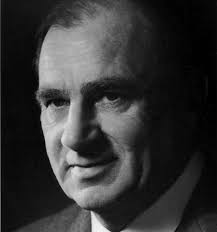
Sir Benjamin Rank was the doyen and because of him and his team, Melbourne became respected worldwide as a centre for plastic surgery. I was fortunate in many ways to have known so many of these highly skilled surgeons; one I classified as a friend, another two were in my year of medicine, one made an outstanding contribution in determining the blood supplies to skin and underlying tissue of various parts of the body; the second combined plastic surgery with ophthalmology, a sub-specialty which, even now, is increasingly directed towards improving appearance rather than correcting deformity and extirpation of tumours.
I had a bad car accident in 1981 and among my myriad injuries was one where my chin struck the steering wheel. It had previously been shown when I had any dental work that my bone is very dense. When my chin struck the steering wheel, I sustained a cruciform lesion, suggesting my tissue between steering wheel and jaw imploded. My jaw was not fractured, so although sore, no wiring was required, but my chin was damaged far beyond just stitching up a complicated laceration. It needed plastic surgery. The tissue which had sagged around my jaw line had to be fixed. Multiple operations and bandaging to help to hold the repaired tissue followed. Meticulous it was; now what remains is a meandering scar on my chin, hardly visible. But it is 41 years since the accident and cosmetically it has stood the test of time.
Thus, cosmetic surgery is not standalone expertise, conjured up without regard to the rules of mainstream plastic surgery. Why these so-called aesthetic surgeons, essentially general practitioners who have created their own tribe, are allowed to practice is probably due to the fact that much of the work lies outside Medicare.
The other myth that these aesthetic surgeons hide behind is that any medically qualified practitioner should be able to undertake the practice of medicine. Is that a full stop? It may have been so, even at the time I graduated, since it was assumed that as a student we were exposed to all aspects of medical practice – here was the leap of logic – and thus were competent. That mantra of see one; do one; teach one …

It was a fallacy then and it is a fallacy now. It is appalling that Mark Ashton was harassed by the Health Department after he blew the whistle on the shonky practices, which passed as “cosmetic surgery”. Plastic surgery is all about outcomes. Cosmetic results – yes important, but in the hands of a competent surgeon what would you otherwise expect? At the simplest level this may be just removing a tumour from the skin. However, it is vital to remove all the tumour otherwise more surgery will be required to determine the tumour edge. A competent surgeon gets this right first time to avoid trauma to the patient and additional cost – to either the patient or the taxpayer (and this depends on the results of pathology and whether the lesion proves malignant or not). In my case once, the plastic surgeon did not get the edge, but he was quick to realise that he had not done so, and the additional operation was done efficiently with an excellent result- it has not recurred in 30 years.
I‘m very much a believer that all plastic surgery should be under one set of best practice rules. Those cosmetic surgeons who have learnt the practice involved in creating a temporary illusion that the ageing process can be combatted should abide by the same standards that I would expect from a plastic surgeon undertaking lifesaving rather than lifestyle operations. To me it is so obvious. The dark side of this area of surgery was caught on camera, where the supposed surgeons were engaging in disgusting antics, while performing liposuction. Unbelievable.
The area has been subject to multiple investigations by the media, but the prime response has been the lawyers threatening a class action. However, what of the government and organised medicine? Most of these cosmetic cowboys join the Australia Medical Association knowing how loath it is to criticise its constituency – or rather to call for a total revamping of the regulating and disciplining agencies.
The scandal of the raid on Professor Ashton shortly after the 60 Minutes TV exposé, by Federal Government regulators, made me think of dark corridors or coffee bars where scuttlebutt is devised, and shock-horror – money can change hands.
If I were Government, I would initiate an investigation into how the raid came about, and just who was the whistleblower. Or was there one?
In the meantime, I would bring the whole practice of plastic surgery including cosmetic surgery under the one regulating body, offer the chair of such a body to Mark Ashton for five years, together with staff including a panel of qualified plastic surgeons to review the competence of all those practising and generally fix this appalling mess. If this means obtaining the Kabuki doll appearance has to be carved out in another country, so be it.
I wonder what Sir Benjamin Rank would have done; but then we live in different times. That does not mean Australia should be inflicted with a class of people – that of incompetent practitioners – in their case laughingly called cosmetic surgeons, should be able to display their incompetence and general disregard for their patients and leave it to the reputable area of the Australian health system to repair. Furthermore, those cosmetic surgeons who are providing competent, quality procedures should welcome such a move.
A good story
The following report appeared this week in the Boston Globe. Why it is a good story is evident, and I realised how little I know. But this article I’m glad I read.
Explorers Bradford Washburn and Robert Bates travelled to the remote Yukon wilderness in 1937 to climb Mount Lucania, but a month of bad weather that preceded their trip had left the Walsh Glacier, the starting point of their expedition, covered in “fathomless” slush and “cut to ribbons by dozens of new crevasses.”
The poor conditions made it impossible to get a flight off the glacier after their climb, so the men hiked more than 100 miles to safety, shedding supplies that would have been too heavy to carry. It was one of the more remarkable survival stories of the past century.
Nestled in the cache they left behind were cameras that Washburn, a renowned photographer, had planned to retrieve a year later but never did.
Instead, a seven-person expedition team recovered the cameras in August, 85 years later and more than 12 miles from where they had been left. The team of explorers announced their discovery last week.
Washburn, who died in 2007, would become one of the world’s top mountaineers, in addition to his work as one of its foremost cartographers. In Boston, he would be known as the man who built the Museum of Science into one of the premier institutions in New England.
The explorers found a portion of one of Washburn’s aerial shutter cameras, a Fairchild F-8. They also recovered two motion-picture cameras with the film loaded, a DeVry “Lunchbox” camera model, and a Bell & Howell Eyemo 71, as well as mountaineering equipment.
Conservators at Parks Canada, which oversees national parks in Canada, are treating the cameras to see if any images can be recovered.
The idea to recover the cameras came from Griffin Post, a professional skier who had learned about the cache while reading a 2002 book about the explorers’ harrowing journey, “Escape from Lucania” by David Roberts.
Post read Washburn’s journals, enlisted the help of scientists, and this year led two expeditions to the glacier in Kluane National Park and Reserve in the northwest corner of Canada in search of the cameras.
“You do all this research, you have all this science-based reasoning, and you think it’s totally possible: We’re going to go in there and look in this certain area, and it’s going to be there,” Post said Saturday. “And then the first time you actually see the valley of the Walsh Glacier and how massive it is and how many crevasses there are, how rugged the terrain is, your heart kind of sinks and you’re kind of like, no way, there’s just so much terrain.”
To find the items, the team enlisted Dorota Medrzycka, a glaciologist who interpreted maps and historical observations of the glacier’s flow to determine where the cache might be. But she could only provide estimates, and the group spent days searching the glacier.
“It would take us the whole day to walk 10 kilometers up glacier and come back to camp,” Medrzycka said. “And going up, there was quite a bit of crevasses, so there was a lot of zigzagging to try to find spots to jump over them.”
The group could not simply return to the spot where Washburn and Bates had left the cameras, because the glacier’s flow had changed the landscape.
Glaciers move at a constant speed from one year to the next, but not the Walsh Glacier, Medrzycka said. Unlike most, it is a surging glacier, which means that every few decades it moves more quickly for a period of a year or two.
In a normal year, the Walsh Glacier typically flows less than 1 meter per day. During the surge, it moves more than 10 meters, or about 32 feet, per day. Since the 1930s, there have been two surges.
Toward the end of the team’s weeklong trip in August, Medrzycka noticed two anomalies in the pattern of the ice, which she guessed had been caused by the surges, and was able to calculate a new estimate about where the items might be.
The revised estimate ended up sending the team to the items the next day.
“Knowing that the educated guess I made actually paid off and was right, it’s a very incredible feeling,” Medrzycka said.
Her findings also provided a new data point about the glacier that will be helpful for researchers.
“We can now better understand the change in the dynamics on Walsh Glacier and potentially be able to better predict how this specific glacier might change in the future,” Medrzycka said.
Whether the surging was tied to climate change was unclear, she said.
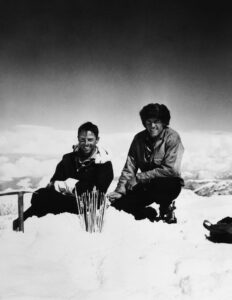
“This irregular flow, that means that they are not behaving like other glaciers in the region,” Medrzycka said. “It’s difficult to say how much of what happens on Walsh Glacier is related to anything climatic or if it’s just internal behaviour.
The team was backed by Teton Gravity Research, a company that creates media showcasing extreme sports and plans to release a film about the item recovery.
Post said that though it seemed unlikely, he was cautiously optimistic that researchers would be able to recover images from the cameras.
“It was so unlikely to find the cache in the first place after 85 years,” he said. “Yes, it’s unlikely that some of that film is salvageable — but maybe it is.”
Mouse Whisper
The Italians have a phrase “come un ghiro” as in “ho dormito come un ghiro” – I slept like a dormouse, meaning I slept well, which is not surprising given that our dormouse cousins spend up to six months in hibernation. Like the T-Model Ford which could be any colour as long as it was black, dormice are any colour as long as it is Hazel; unless they are of the edible dormouse variety which was a delicacy favoured by the Romans and still persists as a delicacy among the countryfolk of Croatia and Slovenia, where their fat little bodies cooked are supposed to rival squirrel in their greasiness.
Oh, and you can tell a dormouse from a rat because the dormouse has a furry tail whereas the rat has a scaly tail. Just thought you’d like to know, if you’re looking to put one in your teapot to cook and mistaking cousin rat for one of them … just joking.
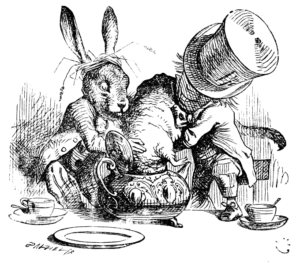

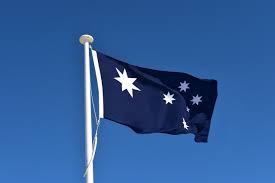
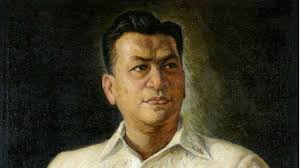
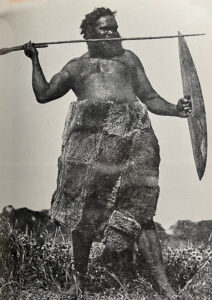 Yet the Ngarrindjeri had their own clothes – an Aboriginal clothed neck to ankles in a toga of possum skins, a woven dilly bag slung over his shoulder, carrying a nulla in one hand and a shield in the other cuts an impressive figure. Other early illustrations show people with woven seaweed cloaks. These were skilful sophisticated hunter/gatherers.
Yet the Ngarrindjeri had their own clothes – an Aboriginal clothed neck to ankles in a toga of possum skins, a woven dilly bag slung over his shoulder, carrying a nulla in one hand and a shield in the other cuts an impressive figure. Other early illustrations show people with woven seaweed cloaks. These were skilful sophisticated hunter/gatherers.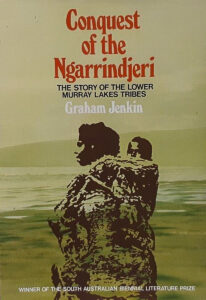 Uncle Henry Rankin gave us a copy of the book “Conquest of the Ngarrindjeri” during a visit just before Christmas in 2000. He had been significant in maintaining the integrity of the community – a community whose members are spread far and wide and who are prominent members of the South Australian community. This edition was an update of the original work written by a University of South Australia academic, Graham Jenkin. Originally published in 1979, it won the Wilke Literary Award for non-fiction; the second edition was published by Raukkan itself in 1995.
Uncle Henry Rankin gave us a copy of the book “Conquest of the Ngarrindjeri” during a visit just before Christmas in 2000. He had been significant in maintaining the integrity of the community – a community whose members are spread far and wide and who are prominent members of the South Australian community. This edition was an update of the original work written by a University of South Australia academic, Graham Jenkin. Originally published in 1979, it won the Wilke Literary Award for non-fiction; the second edition was published by Raukkan itself in 1995.
